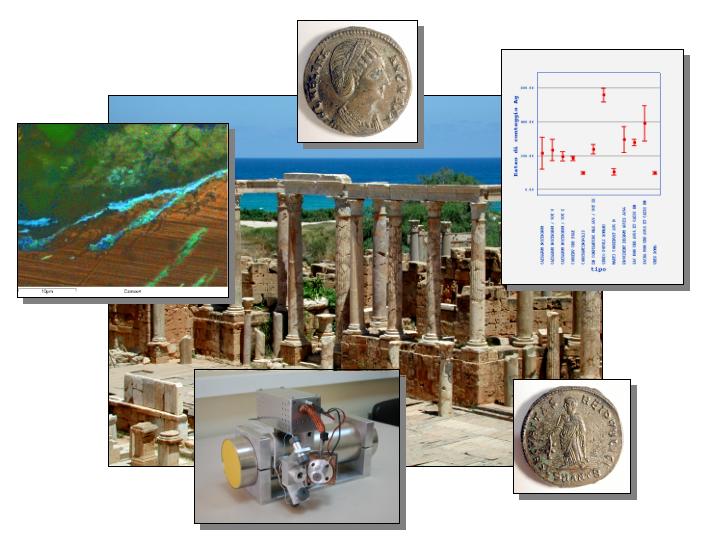The so-called Misurata hoard, at present kept at the Archaeological Museum of Leptis Magna in Libya, is the largest of antiquity and consists of about 108.000 coins of the "follis" type, minted between 294 and 333 b.C. Due the number and the good conservation of the coins, the find, which is being studied under the responsibility of Dr. S. Garraffo director of CNR-ITABC, offers a unique opportunity to study the coin production in the Late Roman Empire.
In this context a research project was started at ITABC in 2001 to study the fabrication technologies of the follis type coins, with special regard for the silvering techniques. The project combines the archaeometric characterization of the original materials with the reproduction of their whole fabrication cycle, which is essential to verify the archaeometric hypotheses.
The project phases, carried out in collaboration with INFN-LNS and the Faculties of Chemistry and Engineering of the University of Rome "La Sapienza", are as follows:
- the continuation of the microstructural investigations carried out since 2001 on coins similar to those of Misurata;
- a series of in situ investigation campaigns. In 2002 the first XRF campaign was carried out at Homs, in Libya; the results show that, given a sufficiently large number of data, it is possible to obtain reliable information on the intrinsic value of the coins as a function of the period and place of production. This confirms the effectiveness of the method, consisting in doing a large number of short measurements with a portable non-destructive XRF spectrometer, developed by ITABC in collaboration with the Politecnico of Milan. This will allow to identify the main constructive typologies and, consequently, a reduced number of
coins, on which more sophisticated investigations will be carried out; these will be optical metallography and the measurement of the surface composition by PIXE-alpha spectrometry;
- the construction of hypotheses bases on the results obtained;
- the production of coin replicas based on the above hypotheses, for which the collaboration of the Italian National Polygraphic and Mint will be asked;
- the characterization of the replicas, the comparison with the originals and the identification of similarities;
- the carrying out of the final conclusions.
The project is strongly innovative for both its aims and methods: it is the first time that a systematic study of such a large number of coins is undertaken and that ad hoc designed methods are used, with special regard for the measurement fastness. It will also be the first time that the whole folles fabrication cycle is reproduced relying on the scientific study of the originals.
Immagini:

